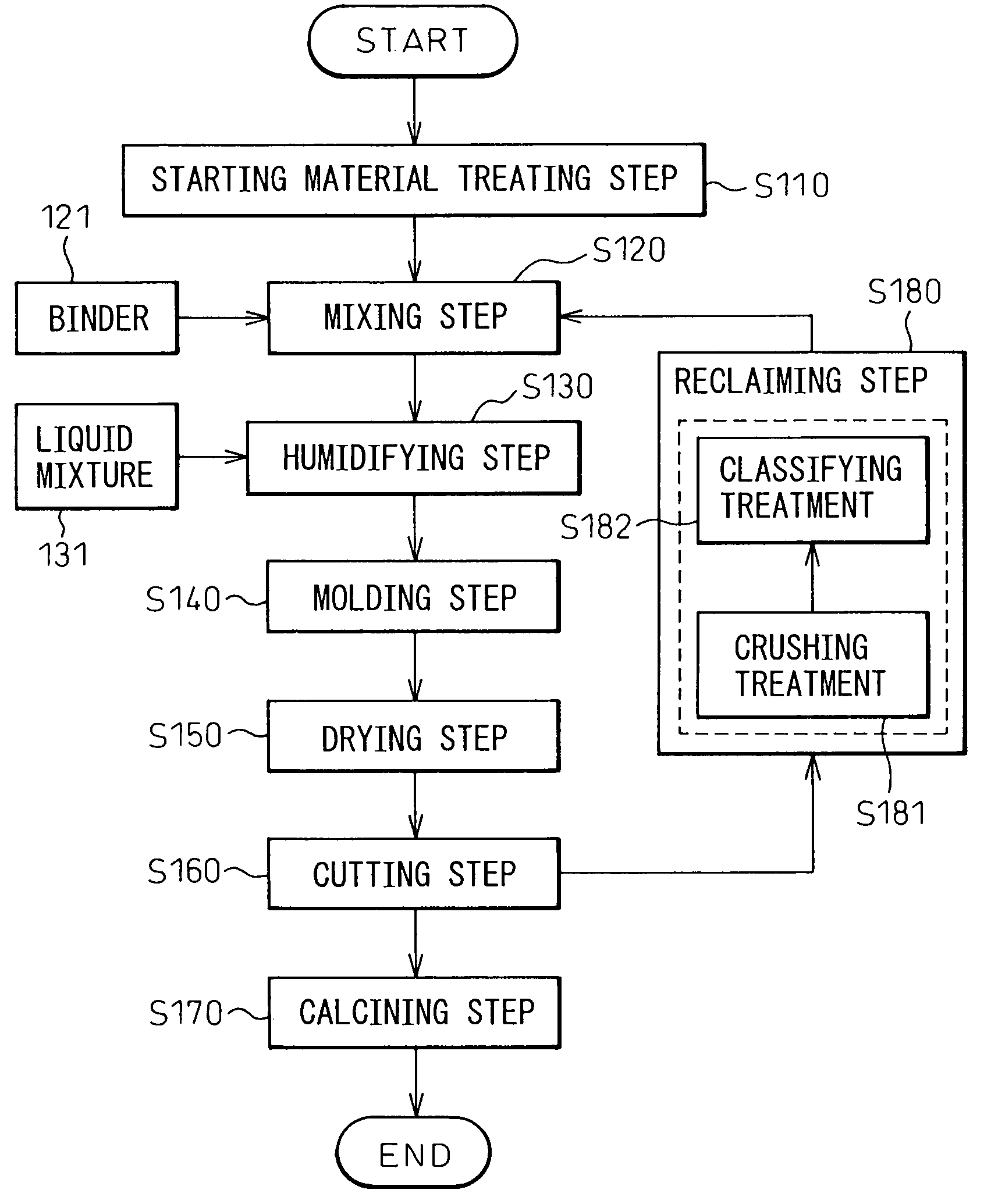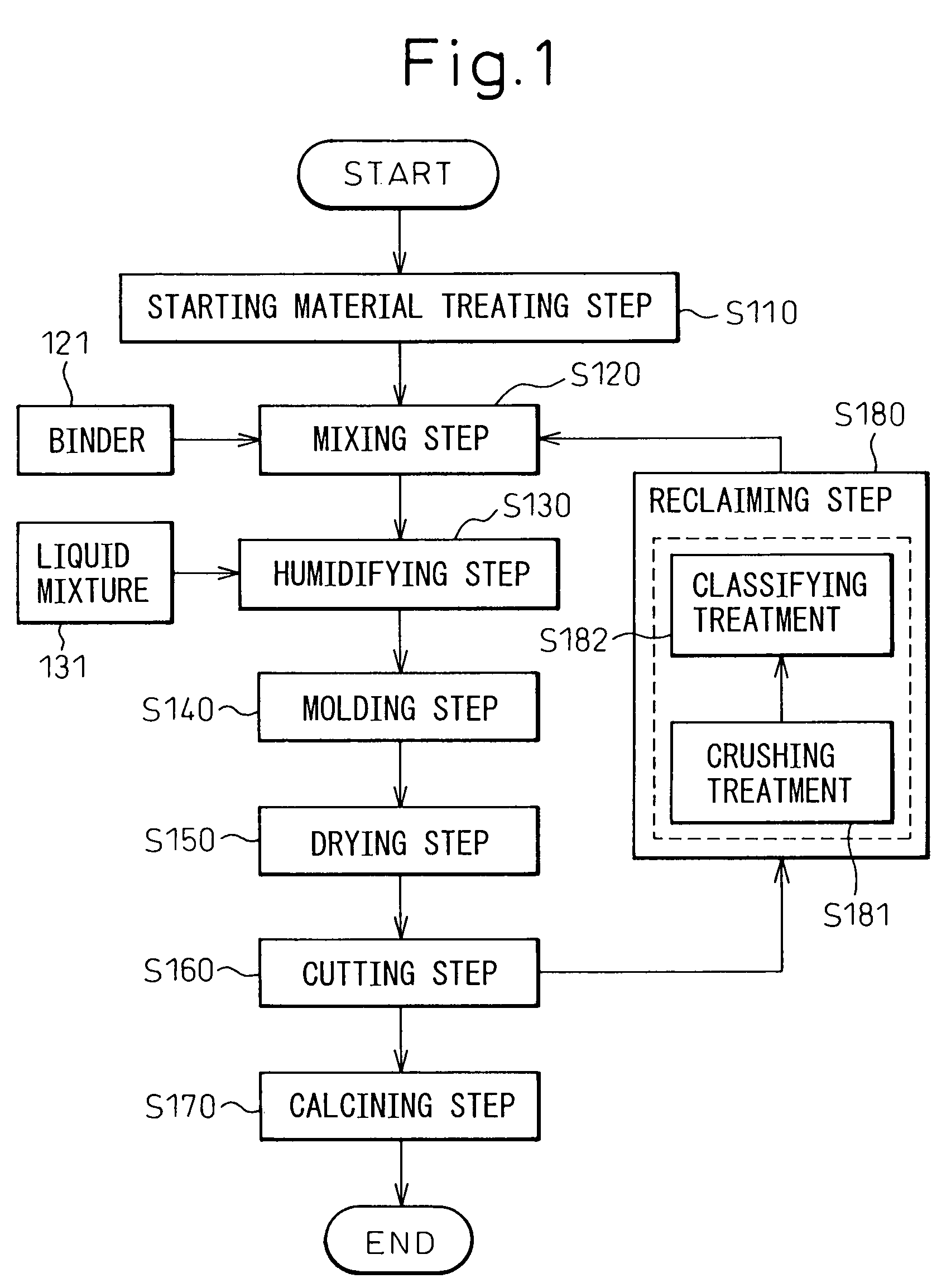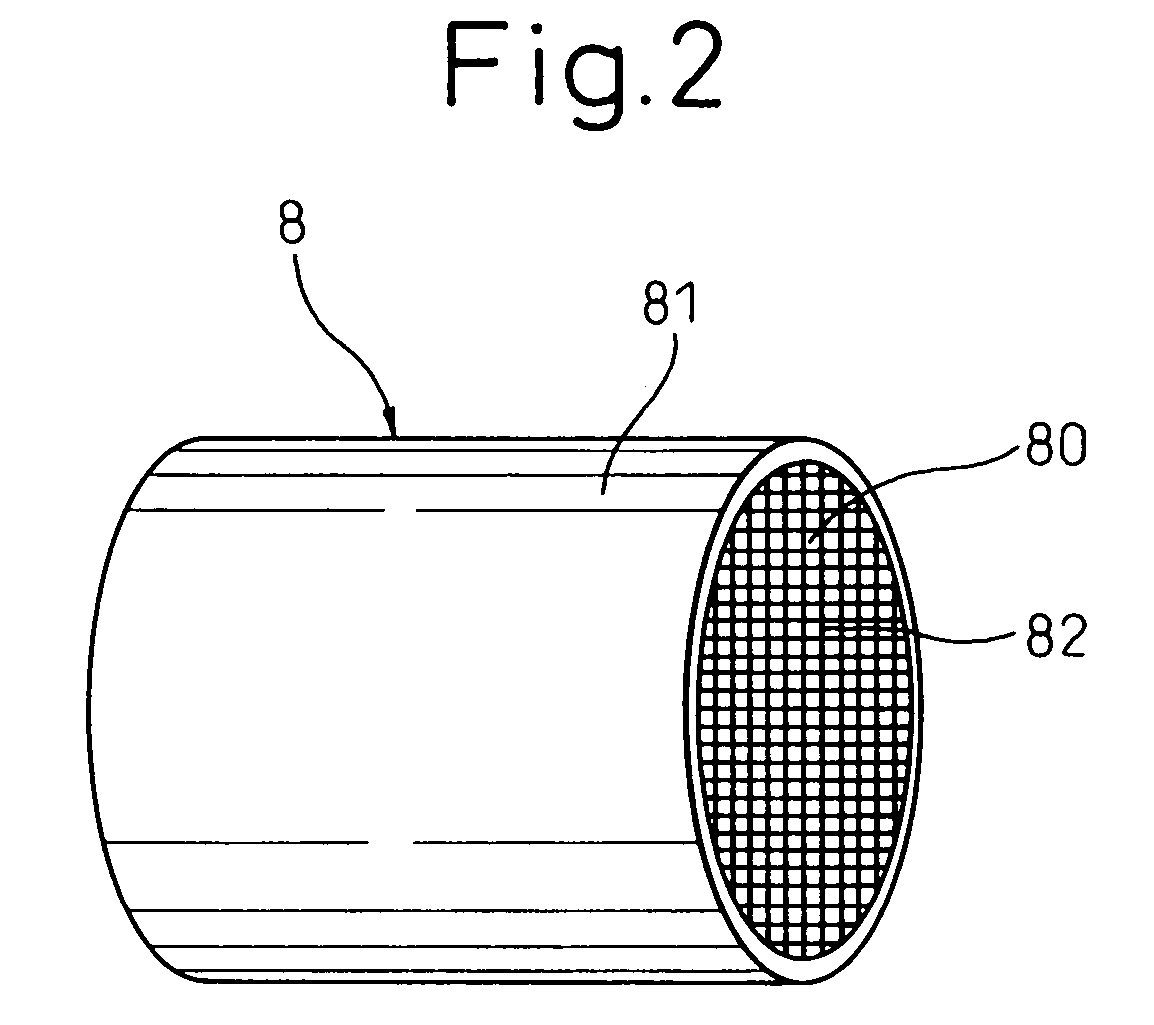Method for producing cordierite ceramic body using reclaimed ceramic starting material
a technology of reclaimed ceramics and cordierite, which is applied in the field of can solve the problems of deterioration of thermal expansion coefficient, sometimes deterioration of quality of cordierite ceramic bodies produced using reclaimed ceramic starting materials,
- Summary
- Abstract
- Description
- Claims
- Application Information
AI Technical Summary
Benefits of technology
Problems solved by technology
Method used
Image
Examples
example 1
[0110]The method for producing the cordierite ceramic body 8 (FIG. 2) of this Example is described by referring to FIGS. 1 to 6.
[0111]As shown in FIG. 1, the method for producing the cordierite ceramic body 8 of this Example comprises a mixing step S120 of mixing a ceramic starting material and a binder 121 to produce a mixed starting material, a humidifying step S130 of adding a humidifying liquid 131 to the mixed starting material to produce a humidified starting material 73, a molding step S140 of kneading and extruding the humidified starting material 73 to mold a ceramic molded article 88 (FIG. 4), a drying step S150 of drying the ceramic molded article 88, a cutting step S160 of cutting out an unnecessary part 888 of the ceramic molded article 88 and machining the ceramic molded article 88 into a predetermined length (FIG. 5), and a calcining step S170 of calcining the ceramic molded article 88 to produce a ceramic calcined body.
[0112]Furthermore, a reclaiming step S180 of per...
example 2
[0159]In this Example, the effect provided when the reclaimed powder as the reclaimed ceramic starting material in Example 1 is kept to a particle size of 1 mm or more is clarified by various experiments and resulting experimental data.
[0160]In the first experiment, the unnecessary part generated from the ceramic molded article after drying was crushed into several kinds of reclaimed powders differing in the particle size within the average particle size range from 0.2 to 6 mm. Thereafter, cordierite ceramic bodies were produced from a ceramic starting material comprising only each reclaimed powder.
[0161]When each cordierite ceramic body was measured on the coefficient of thermal expansion, it was found that there is a high correlation between the particle size of reclaimed powders and the thermal expansion coefficient of the produced cordierite ceramic body.
[0162]That is, as seen from FIG. 7 showing the average particle size of the reclaimed powder used on the abscissa and showing ...
example 3
[0188]In this Example, the effect of the reclaimed powder content in the mixing step was examined based on the production process of a cordierite ceramic body of Example 1.
[0189]In this Example, the content of the reclaimed powder occupying in the entire ceramic starting material in the mixing step was changed in the range from 0 to 100 parts by weight and the produced cordierite ceramic bodies were examined on the coefficient of thermal expansion.
[0190]As seen from FIG. 12 showing the reclaimed powder content on the abscissa and showing the thermal expansion coefficient of the produced cordierite ceramic body on the ordinate, as the reclaimed powder content in the ceramic starting material is increased, the thermal expansion coefficient of the cordierite ceramic body produced from the ceramic starting material becomes larger.
[0191]Also, from the data regarding the reclaimed powder having a particle size of 1 to 5 mm (shown by a solid line and rhombus plotting), it is seen that the ...
PUM
| Property | Measurement | Unit |
|---|---|---|
| Percent by mass | aaaaa | aaaaa |
| Percent by mass | aaaaa | aaaaa |
| Length | aaaaa | aaaaa |
Abstract
Description
Claims
Application Information
 Login to View More
Login to View More - R&D
- Intellectual Property
- Life Sciences
- Materials
- Tech Scout
- Unparalleled Data Quality
- Higher Quality Content
- 60% Fewer Hallucinations
Browse by: Latest US Patents, China's latest patents, Technical Efficacy Thesaurus, Application Domain, Technology Topic, Popular Technical Reports.
© 2025 PatSnap. All rights reserved.Legal|Privacy policy|Modern Slavery Act Transparency Statement|Sitemap|About US| Contact US: help@patsnap.com



